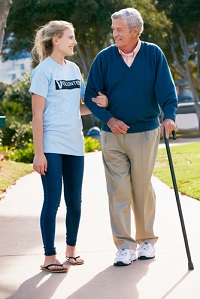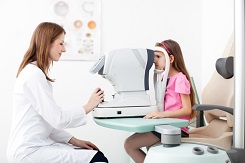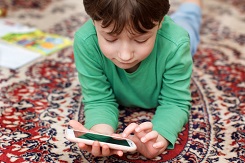 The phrase “pay it forward” is one that is used when a person does something nice for another person after they themselves have received a random act of kindness. When you are the recipient of a random act of kindness and want to pay it forward you don’t repay the person who did something nice for you, but instead do something nice for someone else. As more parents become concerned over a growing sense of entitlement in children, the desire to teach children to pay it forward becomes greater. With the help of these 21 blog entries, you can find several ways to encourage your kids to pay it forward to others.
The phrase “pay it forward” is one that is used when a person does something nice for another person after they themselves have received a random act of kindness. When you are the recipient of a random act of kindness and want to pay it forward you don’t repay the person who did something nice for you, but instead do something nice for someone else. As more parents become concerned over a growing sense of entitlement in children, the desire to teach children to pay it forward becomes greater. With the help of these 21 blog entries, you can find several ways to encourage your kids to pay it forward to others.
Everyday Kindness
Paying it forward doesn’t have to be a grand gesture. Small everyday acts of kindness teach kids to open their eyes to the needs of the world and lend a helping hand if they can. Simply carrying groceries for someone who has too many bags or holding the door for someone can go a long ways in brightening someone’s day. For more examples showing acts of everyday kindness, take a look at these seven blog posts.
- Teaching Kids to Pay it Forward {Acts of Kindness} By using very little money this group of kids brightened the day of many people.
- Random Acts of Kindness: Teaching Children to Pay it Forward You can set the example by doing kind things for strangers.
- Teaching Your Kids Valuable Lessons During Roadtripping One common way to pay it forward is to pay for the food of the person behind you when you go through a drive-thru.
- Teaching Your Kids to Pay It Forward Take time to notice people around you and to be kind to strangers that may be having a bad day.
- Teaching Your Kids How to Give Generously Encourage your kids to do something nice for someone else every time someone does something nice for them.
- Pay It Forward: Road Trip Style Something as simple as smiling and being nice to a stranger may make a world of difference; you never know who’s day you might brighten simply with a smile.
- Pay-It-Forward Ice Cream Coupons A random act of kindness by this blogger was rewarded and then paid forward again.
Local Needs
Teaching kids to look around their community for ways that they can help out will teach them the delight that comes from helping others. Volunteering can help open a child’s eyes to those in need and experience the joy that comes from helping them. Check out these seven blog entries to learn where your kids can go to pay forward all of the many blessings that they have been given.
- Teach Your Kids to Pay it Forward Create a MAD (Making a Difference) club and serve those in need in your community.
- Pay It Forward: Middle School Readers are Rock Stars for Younger Kids This list will help teens find ways that they can pay it forward to the younger children around them.
- Teaching Children How to Make a Difference Volunteering at a food bank not only helps others, it also helps children realize the blessings in their own lives.
- Pay It Forward: Plant a “Give-Away Garden” Since food banks don’t usually have fresh produce, one way your children can pay it forward is to plant a garden and donate the vegetables to the food bank.
- Pay It Forward In the essence of paying it forward, this little girl receives $100 twice a year to buy presents for a needy family or local charity instead of receiving more gifts for herself.
- How to Teach the Art of Giving Letting your kids see you giving opens the door for an opportunity to explain to them how you feel about giving to others.
- Back-to-School Supplies/Teach Kids to Pay It Forward This blogger shared how she took the kids along to the store to buy supplies for kids who couldn’t afford to buy them.
Ways Kids are Paying It Forward
To get you and your kids inspired to pay it forward, take a look at the stories in these seven blog articles that feature kids who have done acts of kindness of all kinds all over the country.
- Pay It Forward Something as simple as making food for a sick friend is a way kids can be taught to pay it forward.
- Pottsboro Kids ‘Pay It Forward’ In this article, teenagers come together to buy a new student a laptop when his was stolen from his backpack.
- Paying It Forward On and Off the Court Teens in a rough area volunteer to teach younger kids how to play basketball to keep them off the streets during the summer.
- Kutz Kids Pay It Forward Kids take time during their school day to make blankets for hospital patients and collect pajamas for the Salvation Army.
- Project Pay It Forward This family gave food and toys to those kids who were less fortunate in their neighborhood as a way to pay it forward.
- Jillie Pays It Forward This child suffered from cancer, and now that she is in remission her parents want to pay forward the kindness that was shown to her.
- Once Again I Have Amazing Kids… Pay It Forward These kids shoveled walks and babysat kids for free as ways to pay it forward.








